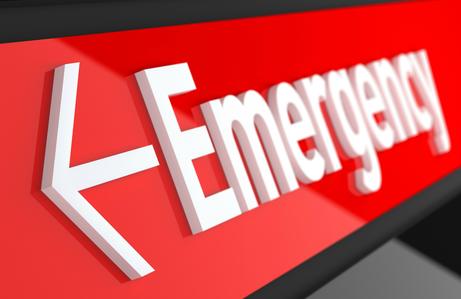Recognizing and Treating Reaction Symptoms
Learn how to distinguish mild and severe food allergy reactions, and always treat severe reactions with epinephrine.

The first symptoms of an allergic reaction usually appear between a few minutes and two hours after exposure to a food. Symptoms can affect different parts of the body, can occur alone or in combination, and can range from mild to severe or even life-threatening.
Mild and Severe Symptoms
Mild symptoms include:
- Nose: itchy or runny nose, sneezing
- Mouth: itchy mouth
- Skin: a few hives, mild itch
- Gut: mild nausea or discomfort
Severe symptoms include:
- Lung: shortness of breath, wheezing, repetitive cough
- Heart: pale, blue, faint, weak pulse, dizzy
- Throat: tight, hoarse, trouble breathing/swallowing
- Mouth: significant swelling of the tongue or lips
- Skin: many hives over body, widespread redness
- Gut: repetitive vomiting or severe diarrhea
- Psychological: feeling something bad is about to happen, anxiety, confusion
Mild and Severe Reactions
Symptoms can involve just one area of the body, or more than one area.
- A mild reaction involves a mild symptom that affects only one area of the body.
- A reaction that involves any severe symptom is a severe reaction.
- A reaction that involves mild symptoms in more than one body area is also a severe reaction.
Severe reactions can quickly progress to anaphylaxis, a condition that can be life-threatening. For this reason, severe reactions must be treated with epinephrine.
Giving Epinephrine
Epinephrine is the only medication that can reverse the symptoms of anaphylaxis. It is available in an easy-to-use auto-injector (Auvi-Q ®, EpiPen®, Generic Epinephrine Auto-Injector [Authorized Generic of EpiPen®] or Adrenaclick®), or nasal spray device (neffy®).
Your allergist may prefer that epinephrine be used with only mild symptoms, or before symptoms even emerge. Consult with your doctor and refer to your personalized Food Allergy & Anaphylaxis Emergency Care Plan.
- Use epinephrine at the first sign of a severe allergic reaction, or as prescribed.
- Call 911. Tell the dispatchers that you have used epinephrine to treat a suspected anaphylactic reaction to food. Request an ambulance with epinephrine on board.
- Go to the emergency room for further treatment, even if symptoms appear to resolve with the epinephrine. The person may need more medication or treatment to manage the reaction.
Safety of Epinephrine
Epinephrine is a safe and relatively harmless drug. When in doubt, use it! The risks of anaphylaxis outweigh any risks from giving the medication.
Take extra caution only with patients for whom an increased heart rate could be a problem. This includes elderly patients and those with known heart disease. But still use epinephrine to treat anaphylaxis in these people.

Recognizing & Responding to Anaphylaxis
Learn more about how to recognize and respond to anaphylaxis with this free training.


